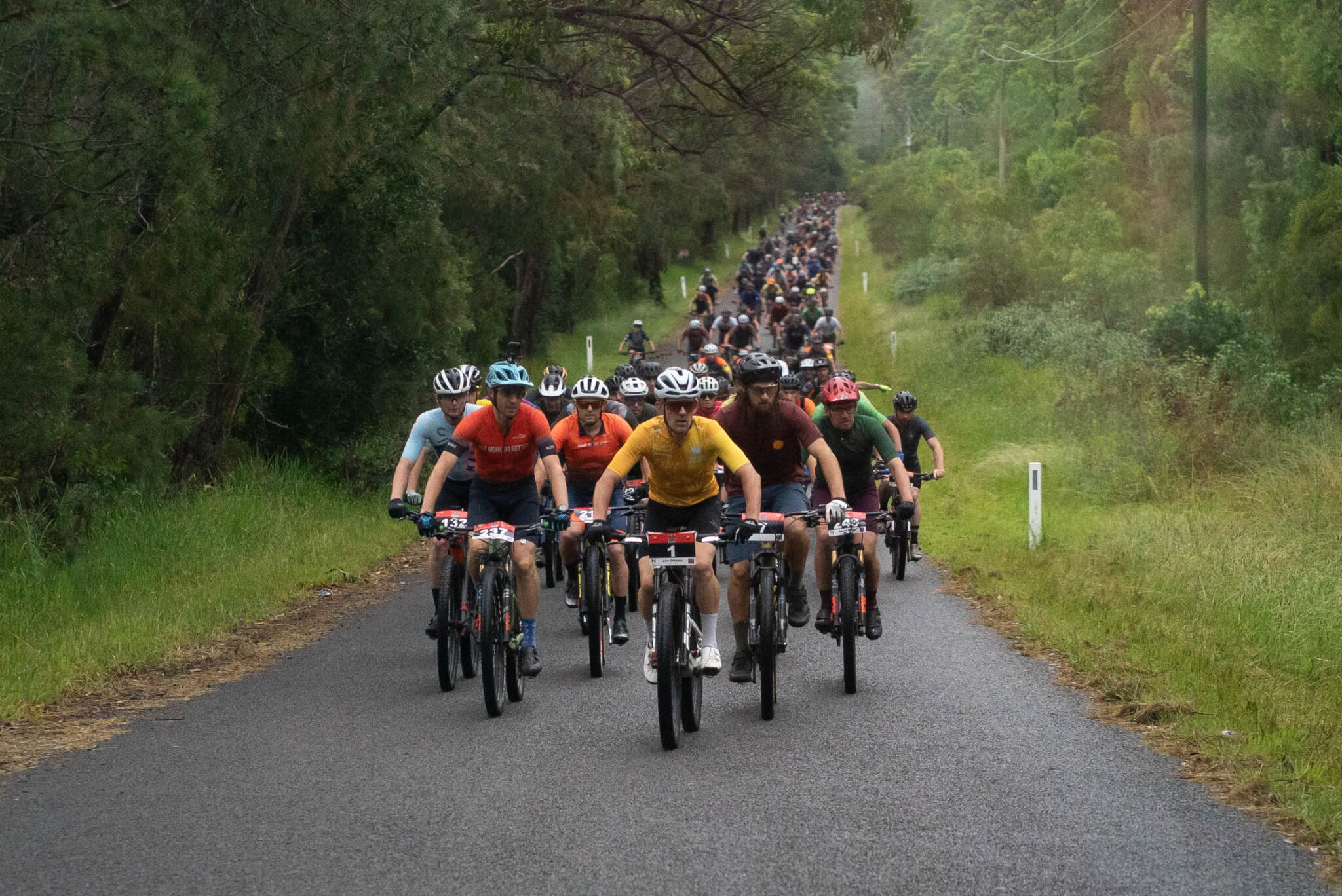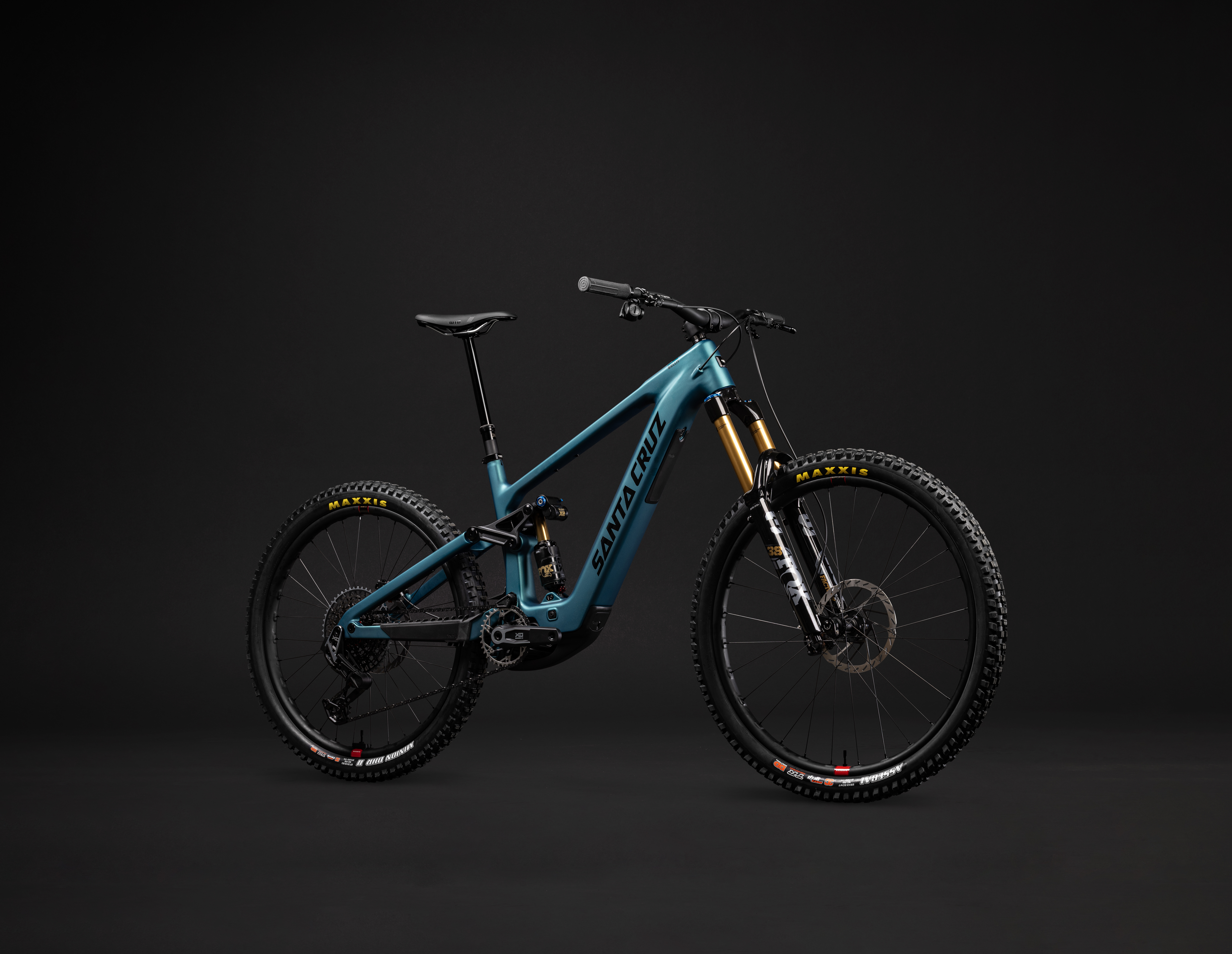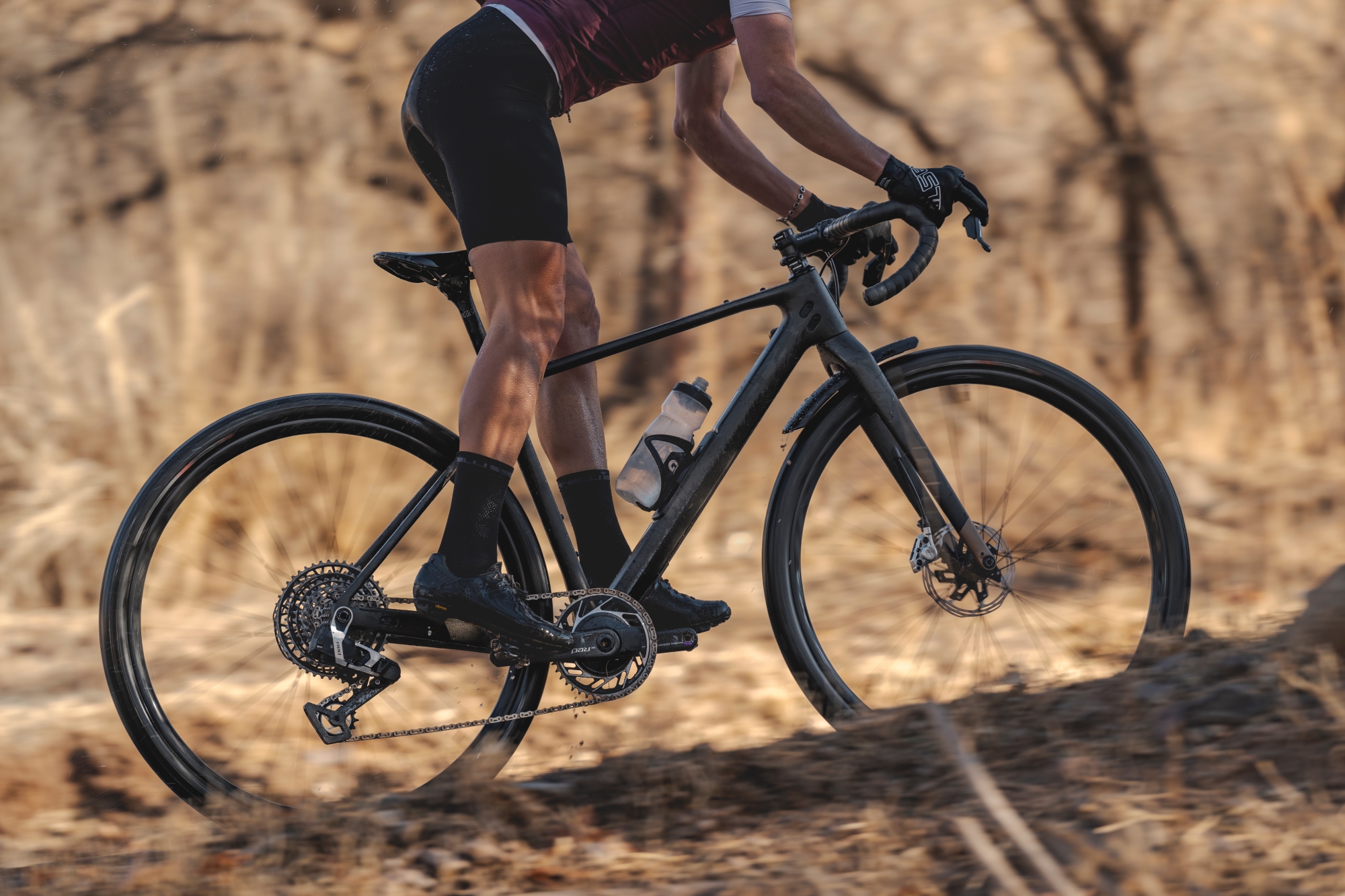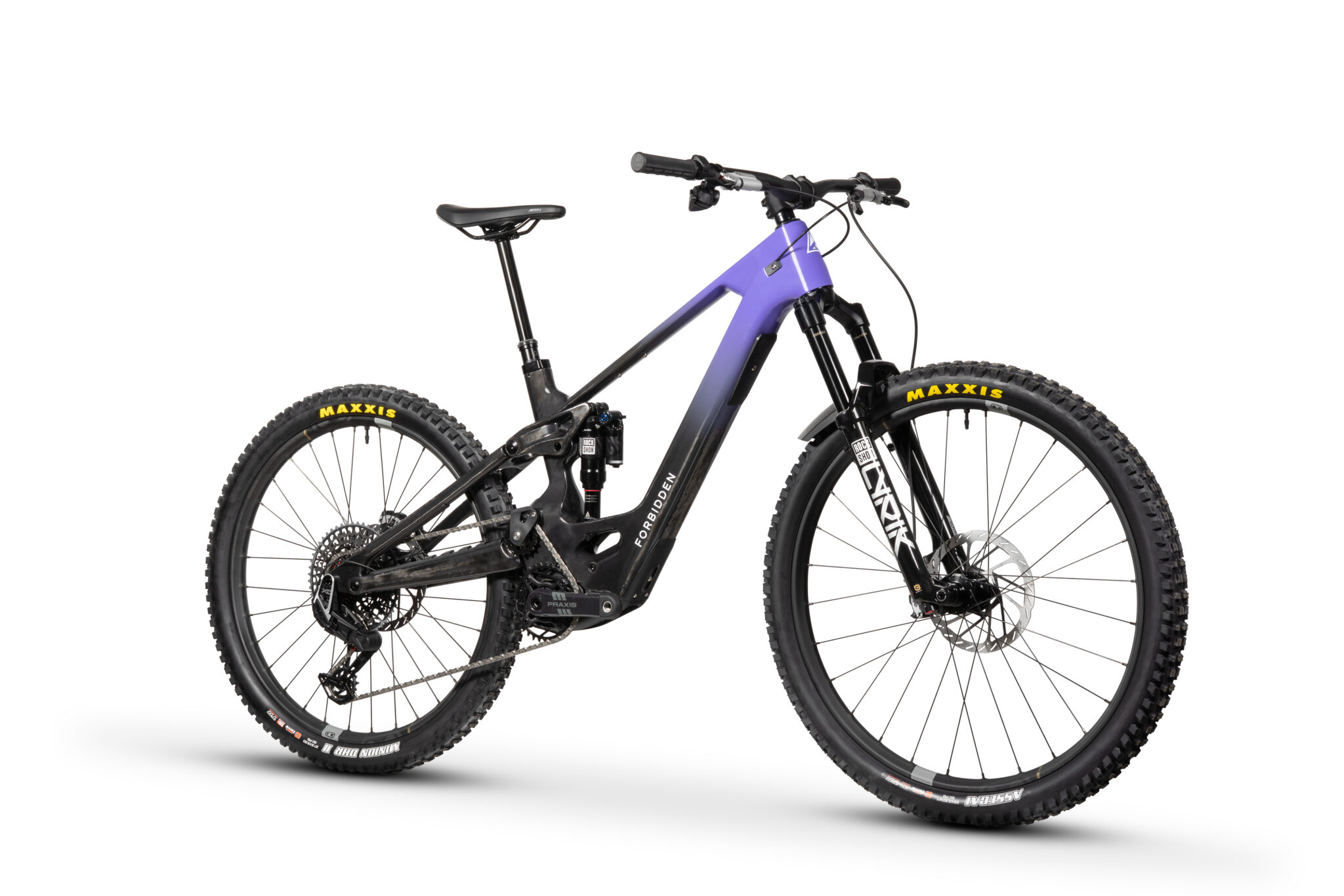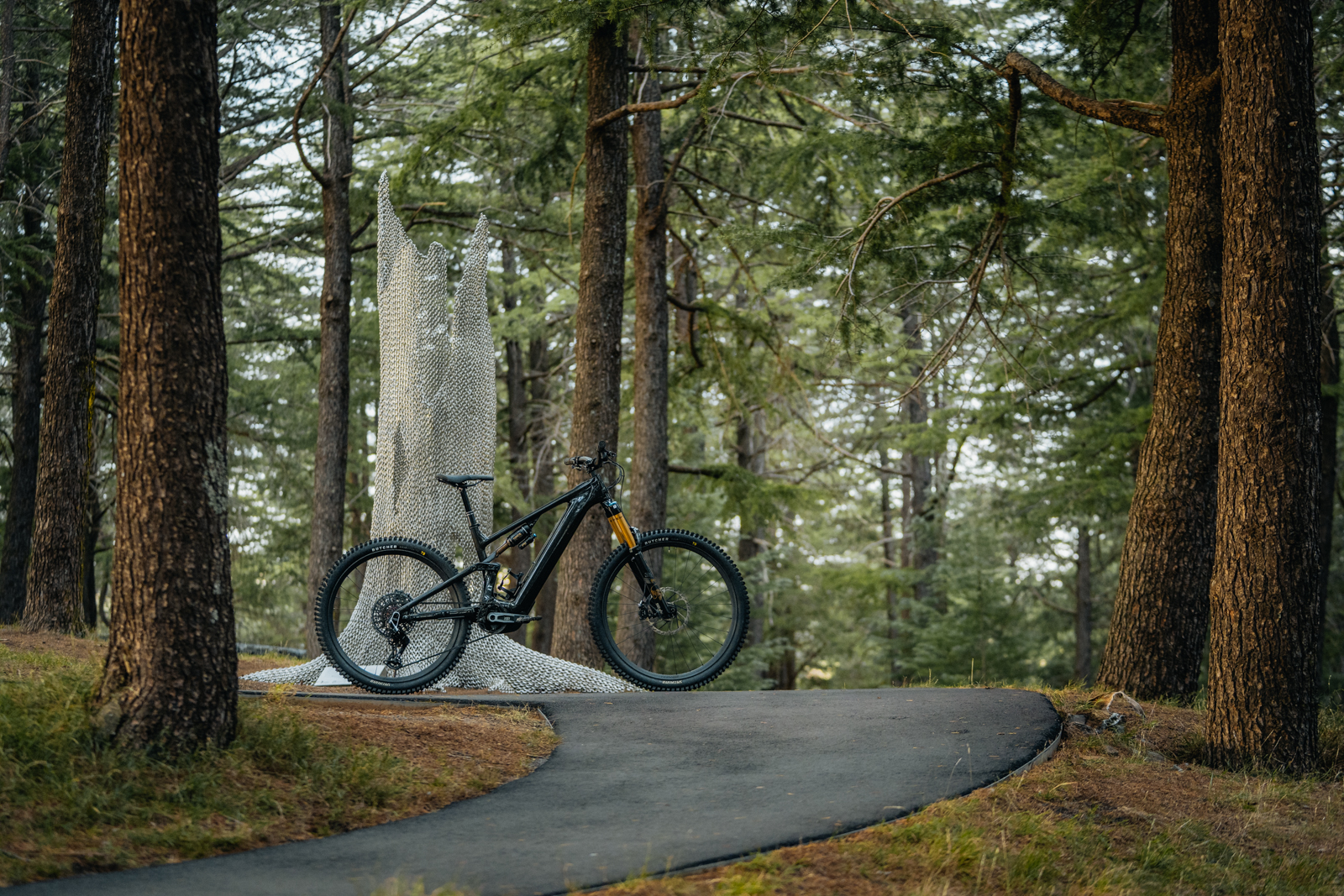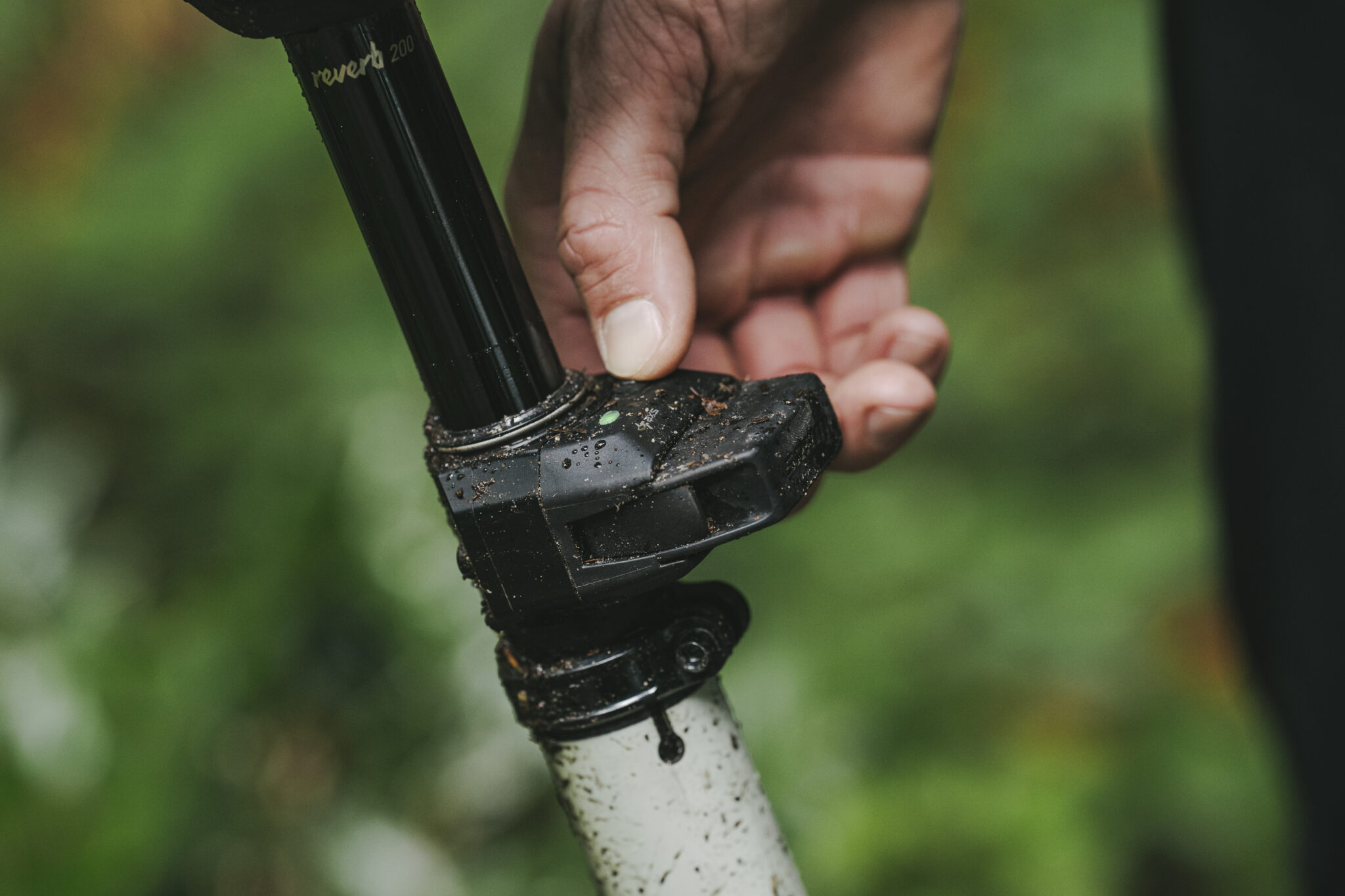Felt Nine 1
This stealthy black and silver 29er looks the business.
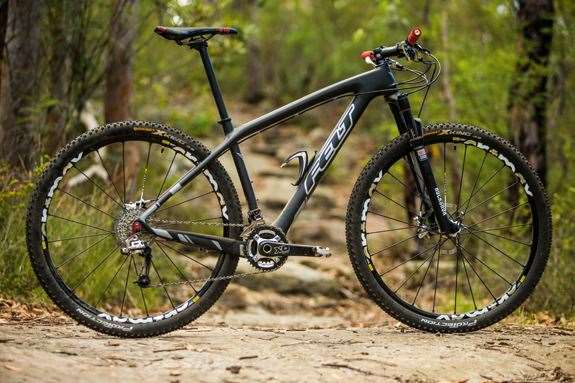
Felt Nine 1
Three things we liked
- Thoughtful frame protection accessories and features.
- The Nine is a rigid frame, but not to the exclusion of comfort.
- Cockpit is killer. Proper width carbon flat ’bar with ESI grips.
Three things we’d change
- The grippy saddle cover. The same saddle with a slipperier cover would be fine.
- The Crossmax ST wheels are too heavy for racing, and too narrow for a dedicated trail wheel. We’d go wider, or lighter, depending on our needs.
- The Protection casing on the Continental tyres is very stiff for an XC tyre. The tyres feel slow and heavy when run at lower pressures. We’d swap to a tyre with a more supple casing.
Pat Howard
Riding Experience 15 years of riding and racing XC and marathon, including solo 24 and Elite marathon (before kids!). Spent 10 years and counting in or around the bike industry, in wholesale and media
Generally rides Whyte M109, Specialized Carve, dirty scum roadie BMC SLT01. All custom built from the frame up
Height 179cm
Weight 74kg
Bike test track North Western Sydney’s greatest hits
Felt is an American company best known for their technical and aerodynamic triathlon and roadbikes, with good reason. Their bikes push boundaries, and kick ass. Felt punches out a solid line of knobby-tyred bikes too, of which many utilise Felt’s expertise in manufacturing carbon-fibre frames.
And this Felt Nine 1 is a case in point: this stealthy black and silver 29er looks the business. Some flashes of red with a light dusting of trail-gunk completes the visual, and you’re quickly forgiven for having thought Felt was all about skinny-tyred bikes.
Southcott Cycles is Felt’s long time Australian distributor, and they’ve always made an effort to get Felt bikes seen at the races, be it through grass roots sponsorships or under elite riders with surnames such as Blair or Van der Ploeg. It’s dead easy to imagine this Nine 1 charging off the start line in a blaze of elbows and knees. It’s specced up to cover some ground in a hurry, and rides as fast as it looks.
The frame shape on the Nine 1 (and all of Felt’s Nine-series carbon bikes) debuted in 2013. It’s curvy and organic, with lots 76 I AMB of beef in all the right places. Felt has several alloy-framed Nine-series bikes, which sit below the carbon models. The alloy frames use longer chainstays and slacker head angles than the race-focused carbon machines.
The Nine 1 is made from Felt’s second-tier UHC Advanced carbon (the Nine FRC is the top of the range), but the Nine 1 frame is impressive, even without knowing what grade the actual material is. The attention to detail in the design and manufacture of the frame is awesome once you’ve taken the time to consider each element, and why. A quick peek inside the frame reveals super smooth and clean tube walls, a hallmark of careful manufacture. Mechanics will be vaulting over workshop counters at Felt dealerships everywhere, desperate to sell carbon Nines to innocent patrons meandering the sales floor. This may be the most mechanic-friendly frame going around, which means a reliable and easy to fix bike. That’s good for the mechanic, and the rider.
First and foremost, the bottom bracket is a traditional English threaded set-up. Press- fit BBs get all the attention but mechanics loathe them as they’re prone to creaking and odd tolerance issues, not to mention the multitude of standards out there that makes stocking spares a nightmare. The front derailleur is a conventional clamp on unit, which allows unlimited adjustment. The headset bearings sit in alloy cups that are bonded into the frame. Again, super easy to work on.
Felt has really scored brownie points with the internal cable routing and rear disc mount. Boring you say? No way! The gear cables run internally, but Felt has glued liners inside the frame so replacing cables is a breeze, and the cables are effectively sealed from the elements from shifter to derailleur. The rear disc brake mounts on top of the seatstay, which is far easier to access than a mount on the chainstay. Felt uses the International Standard mount rather than post mount, which means that there are no threads in the frame to strip out. Your mechanic is weeping tears of joy as he reads this.
There are plenty of nice touches that anyone can appreciate. Felt has incorporated a replaceable chain catcher into the downtube to prevent a dropped chain from mincing your Nine. They also have an alloy protector on the drive-side shainstay in case of a nasty chainsuck. The downtube comes fitted with a clear adhesive rock protector and the drive-side chainstay has a custom full-wrap rubber chain slap protector. Felt clearly think of the Nine as a bike you’d keep for a few seasons.

The build kit on the Nine 1 stays on this vein. the SRAM XO 2×10 drivetrain and brakes are as durable as they are classy. Same goes for the SID fork and rarely seen Mavic Crossmax ST wheels. The Mavics are more than stiff enough for the kind of riding that the Nine is capable of, but their 19mm internal width is at the narrow end of the spectrum and their 1600g weight is a few hundred grams off the pace for a race-ready set of 29er hoops. Felts own carbon flat ‘bar is 720mm wide, and comes with ESI grips as standard. Felt spec is a 90mm stem too. The cockpit is dialed, but I found that the Prologo saddle has a very grippy cover which tenaciously held onto the inside of my thighs as I slid off the back of the saddle.
When the trail points down the Nine asks you to forget about thights and it’s the chest that needs to be on the saddle, thanks. The steep head angle (71.5 degrees) and 440m chainstays keep the Nine’s wheelbase short and the steering sharp. The geometry on the Nine is unapologetically tailored towards the competitive racer type, and the big section bottom bracket, chainstays and headtube are perfect for race pace riding.

The Nine needs to be ridden hard and fast to make sense. The stiff tube sections and wide ‘bar make sketchy technical sections as easy as would be hoped for a 100mm travel race hardtail. Thankfully, Felt has engineering a good degree of comfort into the rear end of the Nine so it doesn’t punish the rider as much as some other racebikes. It would be positively plush for riders used to an alloy frame. Felt also use a long 27.2mm diameter seatpost that takes a lot of sting out of the trail.
The Nine 1 would suit the privateer racer. It’s easy to work on, specced with durable and high-quality kit from head to toe, the frame is made to last, and the geometry is all about making others suffer. The Nine 1 will happily take on a short track eliminator or a 160km marathon as it has low mass and grunt in equal measure to comfort and hurability. It’s versatile when considered within the confines of the racebike niche.
Bike Specs
| BRAND | Felt |
| MODEL | Nine 1 |
| RRP | $5999 |
| WEIGHT | 10.1kg (as tested) |
| DISTRIBUTOR | Southcott Cycles |
| CONTACT | 1800 805 7388, cycleinfo@southcott.com.au, southcottcycles.com.au |
| AVAILABLE SIZES | 14, 16, 18, 20, 22″ |
| FRAME MATERIAL | UHC Advanced carbon |
| FORK | Rock Shox SID RL, 100mm travel, PushLoc remote lockout |
| SHIFTERS | SRAM, X0, 2×10 |
| DERAILLEUR | SRAM, XO |
| CRANK | SRAM XO 38/24 |
| BOTTOM BRACKET | SRAM GXP |
| CHAIN | SRAM, model |
| CASSETTE | SRAM model 11-36 (10spd) |
| HUBS | Mavic, Crossmax ST |
| SPOKES | Alloy, Mavic |
| RIMS | Mavic, Crossmax ST 29 |
| TYRES | Continental, X-King Protection tubeless ready, 29×2.2 |
| BRAKES | SRAM, XO |
| STEM | Felt, 3D forged alloy, 90 mm |
| HANDLEBARS | Felt, flat carbon, 720 mm |
| SEATPOST | Felt, UHC carbon 27.2 mm |
| SADDLE | Prologo, Nago Exo X10, cro-mo rails |

